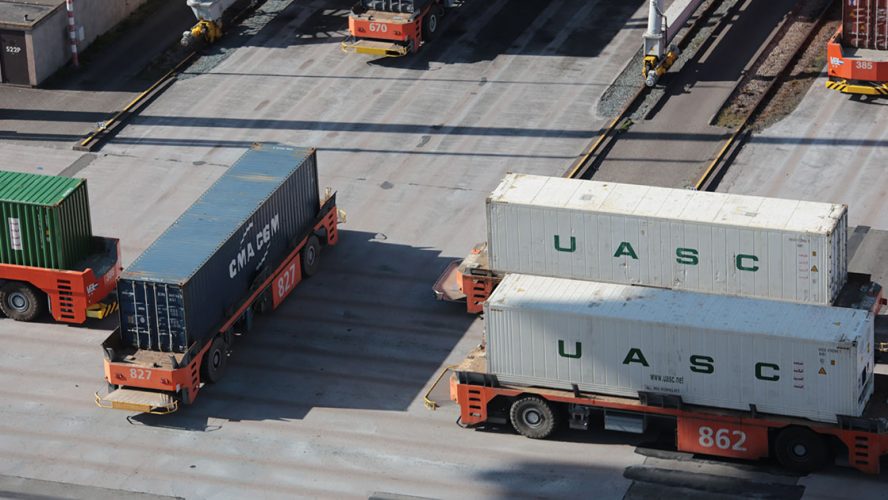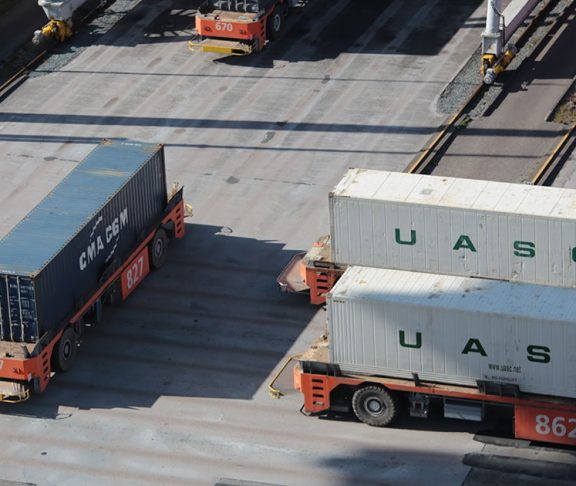Top executives talk to Mediaplanet about the challenges of new technology in the trucking industry.

Colin Sutherland
EVP Sales & Marketing, Geotab
How do you personally define telematics and how is this technology revolutionizing the professional truck driving/fleet industry?
Open platform telematics has opened up huge opportunities for heavy truck fleets to become more centralized in their business management. Fleet telematics has transformed vehicle inspection, time of arrival and departure from paper-based logging to open platforms of integrated data where timely central management of activity enables greater profitability with productive, efficient, safe, and compliant drivers.
What is one important question that fleet managers should be asking their telematics provider?
The most important question for a fleet manager to ask is whether the data is accessible in an open platform. Many traditional telematics providers charge customers to integrate data with third parties and even importing their own customer information. The future of business intelligence is the ability of data to interoperate. Most fleet managers assume that they own the data that their vehicles produce and can access that data without additional charges, or that the data is accessible with secure, software development kit tools. So, it’s important to ask your telematics provider the tough questions about the accessibility of your telematics data.
How are GPS fleet management solutions empowering our drivers to operate safer on the road?
In trucking, driver coaching/training is a routine practiced with a human coach sitting beside a driver on the road or in a simulator. GPS fleet management solutions like Geotab, really put power in the hands of the driver to improve their safety with real-time coaching feedback. For example, in-vehicle verbal feedback gives drivers real-time alerts for speeding, braking, high RPM gear shifting, idling, or other events. This means drivers can adjust their driving in the moment and have an immediate impact on safe operation, which often translates into improved fuel economy in city and highway driving.
What is one misconception regarding the ELD implementation that you would like to debunk to readers?
Trucks are essential for a growing economy and the data coming from those trucks is driving improvement in fuel economy and safety. Being transparent and including drivers right from the start promotes the overall success of any data-driven program. By putting time and effort into training and driver coaching, businesses are ultimately investing in the success of drivers and ensuring that the trucks sharing our roads with cars are running safely and efficiently.
What is the next big thing in the telematics industry that readers should be on the look-out for?
Telematics is going to play an important role in the future of connected business and smart cities. The data collected by IoT connected fleet solutions is incredibly valuable for identifying trends and making improvements. As more and more cars and trucks become connected, the benefit of telematics can be scaled up to help enable solutions for key infrastructure challenges such as traffic congestion, parking shortages, and global road safety. Also, look out for more intuitive logistics in the delivery of goods as open platforms integrate vehicle data with weather, traffic, and customers.
If you were a professional truck driver what is one album you would always carry with you on the road?
Bruce Springsteen, “Born in the USA” – great songs to sing while passing through America’s towns.
Who is one famous individual from history (dead or alive) you would choose as your riding companion and why?
Also a singer – Harry Chapin – in my opinion best songwriter, storyteller of my generation and would be great to talk about his journey on the road, and pen some new songs as we go down the highway.

Marne Keller-Krikava
President/Chief Executive Officer, JJ Keller
How do you personally define telematics and how is this technology revolutionizing the professional truck driving/fleet industry?
In the context of the fleet industry, telematics is the remote monitoring of data from vehicles to improve safety and operations. The knowledge that can be gained from Elog data is really where I see the technology revolutionizing the industry. The concept that this data can be used to positively influence safety, improve driver training and build stronger compliance programs is what excites us at J. J. Keller & Associates. The intent is that leveraging this data will result in safer environments for drivers to operate in, and ultimately, that it could save lives.
What’s a pressing (trucking/fleet) industry-wide problem and how do you think it can be solved?
With more ELD users, we’re seeing a rising concern around data overload. How does a company manage its fleet data, understand the implications and manage risk when its primary business is something entirely different — not data management? With data accruing by the minute, it’s hard to determine what is critical and what is just noise. Prioritizing the data is key. As a compliance partner, we receive data from hundreds of thousands of logging drivers. Then we work with our customers to prioritize the data based on risk and compliance factors, feeding into actionable plans for their business.
What is one important question that fleet managers should be asking their telematics provider?
It’s critical that the ELD provider is also an expert in hours of service rules (there are 30-plus rule sets). As we’ve talked with our more than 400,000 customers about regulations, this is a challenge they’ve expressed. Remember, an ELD is merely the means of creating and delivering an electronic record of duty status. The ELD mandate was written to improve hours of service compliance and prevent falsification. If your provider doesn’t understand the regulations, you risk non-compliance. Ensure the provider is reputable, has experienced regulatory staff and can guide you in the technical and regulatory aspects of the ELog.
What is one misconception regarding ELD implementation that you would like to debunk to readers?
A popular misconception is that implementing ELDs will make a fleet compliant with hours of service regulations. However, that isn’t the case. The ELD mandate is changing how we log, not what we log. Hours of service regulations haven’t changed. In helping thousands of customers implement ELDs — and working with fleets on hours of service compliance for over 60 years — we’ve found those who are running a compliant hours of service program first are more likely to transition successfully. ELD technology will expose non-compliance. Before adding technology to the equation, evaluate your hours of service program and address any issues.
What is the next big thing in the telecommunications industry that readers should be on the look-out for?
The next big thing in the industry is to use this data to inform decisions and improve compliance, safety and operations. From the perspective of managing data, the volume presents a challenge. But from the perspective of improving driver performance, today’s technology provides more transparency into fleets. This is going to enhance the way fleets are being managed and monitoring compliance. Fleets will be more empowered and in a better position to proactively identify compliance issues and work with drivers. We see this as a huge benefit to the industry; fleets will be smarter and naturally decrease their risk footprint.

Kelly Frey
Vice President Product Marketing – Telogis, A Verizon Company
How do you personally define telematics and how is this technology revolutionizing the professional truck driving/fleet industry?
Telematics is generally considered to include the technology that enables mobile operations staff to automatically determine the current and past location and trip history of their fleet vehicles. Over the past few decades the capability of telematics technology has increased beyond just ‘location’ to include advanced features such as engine diagnostic trouble code (DTC) reporting, driver management and messaging, mobile electronic forms, navigation and route optimization and many more features. Today, telematics that incorporates these broader solution capabilities is more often referred to as Mobile Resource Management (MRM) and it is revolutionizing the truck driving / fleet industry.
What’s a pressing (trucking/fleet) industry-wide problem and how do you think it can be solved?
The aging truck driver population and associated driver recruitment and retention problem is still one of the largest issues faced by the industry. Although ‘Truck Driver’ is the single most common job classification in the USA, we are struggling as an industry to replace retiring truck drivers and fill the seats with younger drivers who want to make a career out of driving. We need to leverage technology to make driving safer and more enjoyable, along with keeping drivers better connected while on the road.
What is one important question that fleet managers should be asking their telematics provider?
Are you committed to investing enough in R&D (Research and Development) for your solutions to keep my fleet current and flexible to this industry’s ever-changing demands and needs?
What is one misconception regarding ELD implementation that you would like to debunk to readers?
The biggest misconception regarding ELD implementation is that it will cost you more than it is worth because of reduced productivity or added costs. This is simply not true. ELDs is the first step towards digital transformation for many trucking fleets. Embracing ELDs and the associated benefits of telematics can dramatically reduce operating costs and HOS violations at the same time, while also improving productivity and control of your operations.
What is the next big thing in the telecommunications industry that readers should be on the look-out for?
The cost of connecting assets – trailers, cargo, pallets, bins, etc. – is dropping dramatically due to emerging, low-cost and low-energy devices that are being used to transmit location and associated information such as temperature and movement. These new devices coupled with traditional vehicle telematics and mobile devices will give us 100% visibility to everything required to control and manage the efficiency of the supply chain like never before – on a global basis. This is a necessary precursor to the on-demand economy of today and the autonomous infrastructure of tomorrow.

